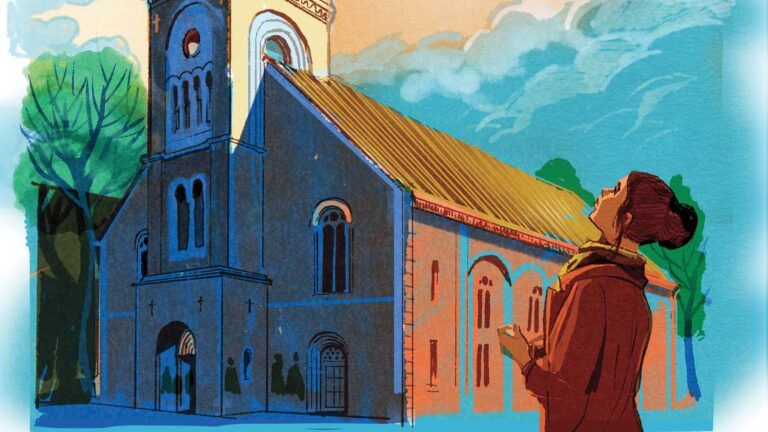Retirement wasn’t what I’d expected.
When my brother and I sold our photography business, I pictured a life of ease. Dad started the business when I was a kid and except for a few breaks—college, flying on Air Force B-52s in Vietnam—I’d been helping take photos and working in a darkroom my whole life.
My brother and I took over after Dad died. The business was pretty much all I knew. Which I guess was my problem.
After retiring, I lived that life of ease. Too much ease. While my wife, Linda, was at work—teaching high school English—I sat around watching TV all day.
Why didn’t I get up, go outside, do something? I’d sure spent enough time dreaming of getting out of the darkroom and basking in the Texas sun. Not that I did—emerging from the darkroom would’ve meant greeting customers. That was my brother’s job. I was too shy.
Part of it, I suppose, was my muscular dystrophy. I’d been diagnosed in my twenties after returning from Vietnam. Even that wasn’t much of an excuse. I had a slow-developing form of the disease.
At 52, when we sold the business, I walked fine with a cane. The truth was, something took hold of me in retirement. A lack of purpose. A sense that the end of work somehow meant the end of life, or at least a substantial part of it. I was too stuck to imagine anything else.
One sunny April afternoon Linda managed to pry me from the couch for a walk at the Dallas Arboretum. I’d been to the arboretum many times. It was only a few miles from our house, and Dad, my brother and I had photographed countless weddings there.
I knew what Linda was up to—yet another attempt to rouse me from my funk. Well, I didn’t feel like being roused. We sat on a bench. An electric tram whirred by ferrying visitors on a tour. The driver’s voice floated out: “Now those flowers over there.…”
“I bet those trams are driven by volunteers,” Linda said. “You could do that.”
Here we go, I thought. “No, I couldn’t,” I said. “I don’t know a thing about flowers.” She had the green thumb, not me. I didn’t add that the prospect of speaking to a tram full of strangers petrified me. Linda said nothing, and soon we left.
We got deeper into spring. I tried to enjoy the nice weather by going out to check the mail or by sitting on the porch. But I felt restless. In spite of myself, I kept thinking about that arboretum. It’s one of the largest and most respected in the country. Pathways wind through ornamental gardens bursting with color and past collections of rare plants from around the globe. Why couldn’t I volunteer? Spending sunny days there sure would beat another trip to the mailbox.
But of course I couldn’t. Linda was the gardener in our house. I was too shy. I couldn’t walk well. Besides, they probably had tons of volunteers. They’d never need a slow old guy like me.
The excuses piled up, yet one day, to my own surprise, I got in the car and made the short drive to the arboretum. Clutching my cane, I approached a parked tram. “I’d like to drive one of these,” I blurted to a driver waiting for passengers. “How would I get started doing that?”
The man pointed me to an administration building tucked amid budding trees. I walked into the office. Before I could tell Cris Emrich, the volunteer coordinator, how little I knew about plants and all the other reasons I would make a terrible volunteer, she had signed me up for a training ride two days later.
“Thanks for coming in!” she said, handing me a manual outlining the arboretum’s collections. “We need people.” She never even looked at my cane.
Two days later I boarded a tram with Jack Mason, a longtime volunteer who trained new drivers. Jack was retired just like I was. “Pretty much all the drivers are,” he said. “We’re the ones with all the time to give, right?” I nodded.
Jack’s tram filled with visitors, and soon we were winding through gardens and past greenhouses. I scribbled notes, trying to keep up with his confident explanations. Jack was funny and relaxed. The riders smiled, taking in the beautiful sights and scents. Could I be as fun? I wondered. I doubted it. I’d spent most of my life in a darkroom.
That night I pored over the manual. I waited for Linda to say, “Told you so,” but she didn’t. She was probably just glad to see me looking at something besides TV. She went to bed early and I read on late into the night, trying to absorb the arboretum’s dizzying array of gardens, plants and research projects. The place was really amazing.
A few days later I stood beside a tram waiting for my first batch of visitors. It was raining. A woman with an umbrella came up. “This is the tour tram?” she asked. I nodded. She climbed aboard and we waited. No one else showed up. I got behind the wheel and pulled onto the path.
The woman told me she was from New York City. I ran through my routine—history of the arboretum, historic buildings housing garden programs and offices, ornate fountains, the names of as many blooming flowers as I could remember (not many). I tossed in a joke. The woman laughed! The tour ended.
“This is my last day in Dallas,” the woman said. “I wasn’t going to miss out on this place even though it’s raining. Your tour was wonderful! Thank you so much.”
Driving that tram became the highlight of my week. I perfected my routine, memorizing reams of information about the arboretum, getting the timing of my jokes down. My face and arms tanned in the summer sun. Any time a passenger asked a question I couldn’t answer, I ran home at the end of the day and looked it up online. Or I asked an arboretum landscape designer. Those people knew everything.
The more I learned about the gardens, the more I wanted to know. Soil treatments, the best seasons for different plants, sun and shade tolerance—it fascinated me how all these realms of knowledge came together to produce something so beautiful. I began to wonder, Could I do that?
Up to that point my entire gardening experience had consisted of mowing and edging the lawn. Linda was the one filling our house with potted plants and flowers.
I went to an arboretum gardener for advice. She asked me about our yard, then took me to some flower beds. “These would probably work very nicely for you,” she said, pointing to some impatiens and begonias. I went straight to a nursery and bought several flats of flowers and bags of mulch and a few gardening books.
The next day I lowered myself slowly to the grass in front of the house and dug in with a trowel. I’d already turned the soil over and spread the mulch. Beside me was a flat of impatiens flopping in their black pots. The sun was hot. I was sweating. My hands were dirty. It was the farthest thing from a darkroom I could have imagined.
That’s when it hit me. I’d only been volunteering at the arboretum for a few months, and all of a sudden my life was changed. When was the last time I’d watched daytime TV? I couldn’t remember.
There was no room in my brain for anything but plants. I ate, slept, went to the arboretum and thought about gardening, about coaxing beauty from the ground a little like the way an image becomes slowly clear when you develop a photograph. The tan on my arms and face had deepened to a dark brown.
At some point in the past few months—I couldn’t pinpoint when exactly—something had taken hold of me. Whatever life force bloomed in that Dallas Arboretum, making all those flowers so bright and beautiful, now it bloomed inside me too.
I put down my trowel. Of course, I knew what that life force was. He’d been there all along, no doubt from that first moment when Linda spied the arboretum tram and suggested I give it a try. “Thank you, God,” I whispered, “for showing me life doesn’t end at retirement. It only ends when we take our eyes off you.”
It’s been seven years since that day I drove that nice lady from New York around my beloved arboretum. I still drive a tram—even though Linda and I now live 100 miles from Dallas. Linda completed a doctorate in English and got a teaching job at a college here in Tyler. I commute to the arboretum three times a month. I guess we’re both living proof that the giver of life is never done giving new life.
I designed a garden here in Tyler, complete with decomposed granite pathways perfect for the wheelchair I now use. I became a certified master gardener—you take a test and log hours helping other household gardeners—and I give talks to churches and community groups about gardening from a wheelchair.
That’s right, me, the guy who used to be too shy to emerge from the darkroom. I’m like a plant in new soil, growing and thriving under the loving care of the Master Gardener himself.



